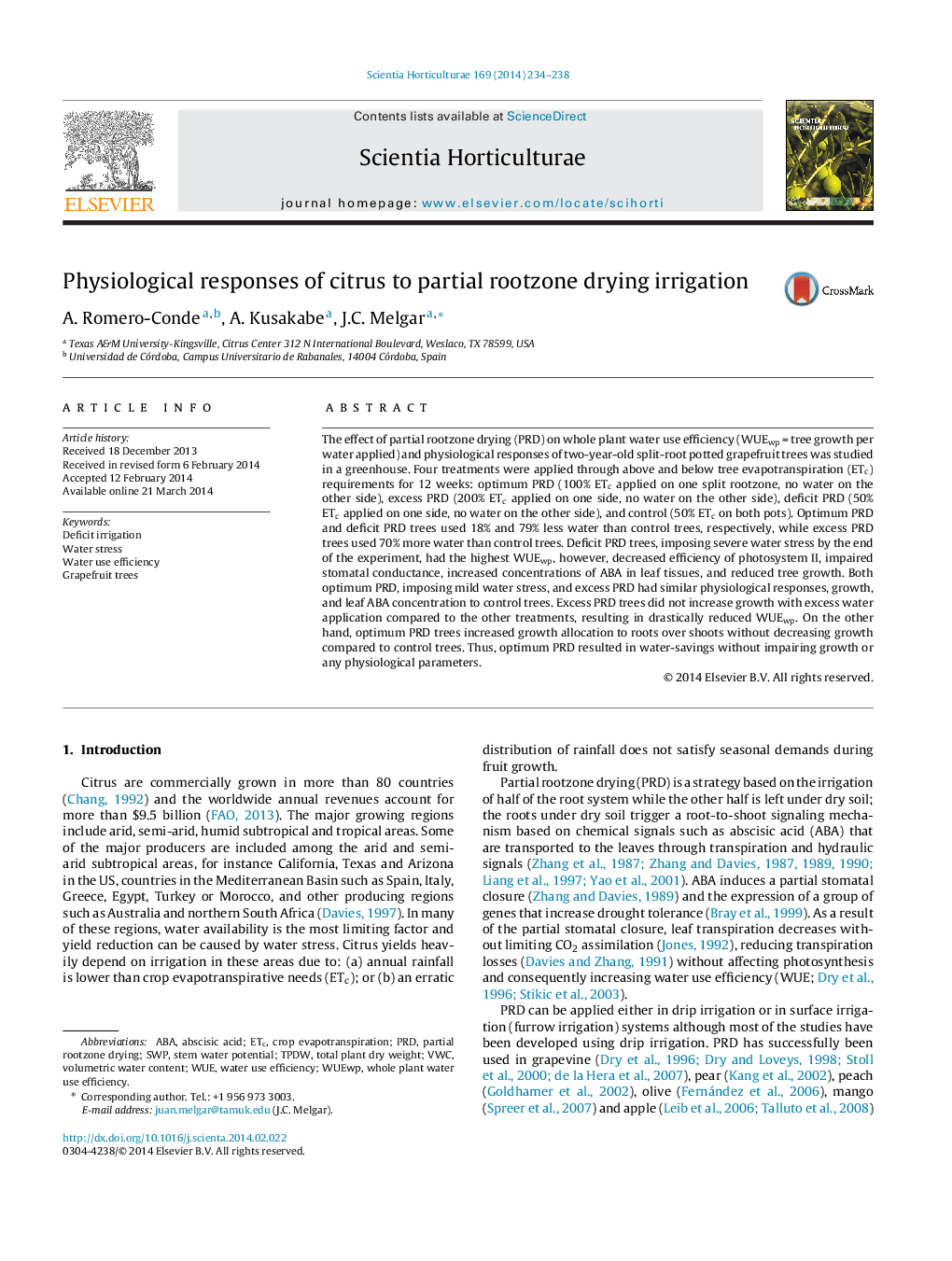| Article ID | Journal | Published Year | Pages | File Type |
|---|---|---|---|---|
| 4566882 | Scientia Horticulturae | 2014 | 5 Pages |
•Optimum PRD used 18% less water than control trees without decreasing tree growth.•Optimum PRD increased growth allocation to roots over shoots.•PRD combined with deficit irrigation caused severe stress that may affect growth.•PRD did not increase tree growth if tree water needs were exceeded.
The effect of partial rootzone drying (PRD) on whole plant water use efficiency (WUEwp = tree growth per water applied) and physiological responses of two-year-old split-root potted grapefruit trees was studied in a greenhouse. Four treatments were applied through above and below tree evapotranspiration (ETc) requirements for 12 weeks: optimum PRD (100% ETc applied on one split rootzone, no water on the other side), excess PRD (200% ETc applied on one side, no water on the other side), deficit PRD (50% ETc applied on one side, no water on the other side), and control (50% ETc on both pots). Optimum PRD and deficit PRD trees used 18% and 79% less water than control trees, respectively, while excess PRD trees used 70% more water than control trees. Deficit PRD trees, imposing severe water stress by the end of the experiment, had the highest WUEwp, however, decreased efficiency of photosystem II, impaired stomatal conductance, increased concentrations of ABA in leaf tissues, and reduced tree growth. Both optimum PRD, imposing mild water stress, and excess PRD had similar physiological responses, growth, and leaf ABA concentration to control trees. Excess PRD trees did not increase growth with excess water application compared to the other treatments, resulting in drastically reduced WUEwp. On the other hand, optimum PRD trees increased growth allocation to roots over shoots without decreasing growth compared to control trees. Thus, optimum PRD resulted in water-savings without impairing growth or any physiological parameters.
